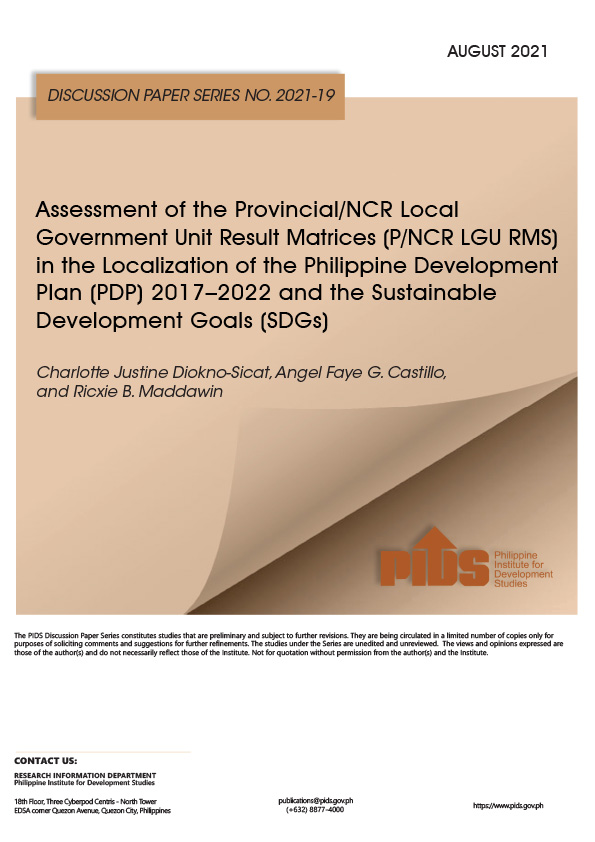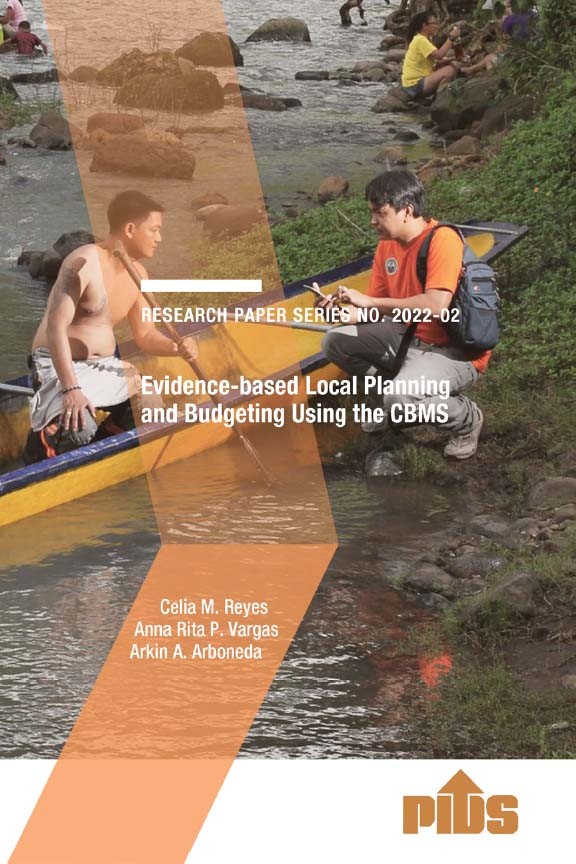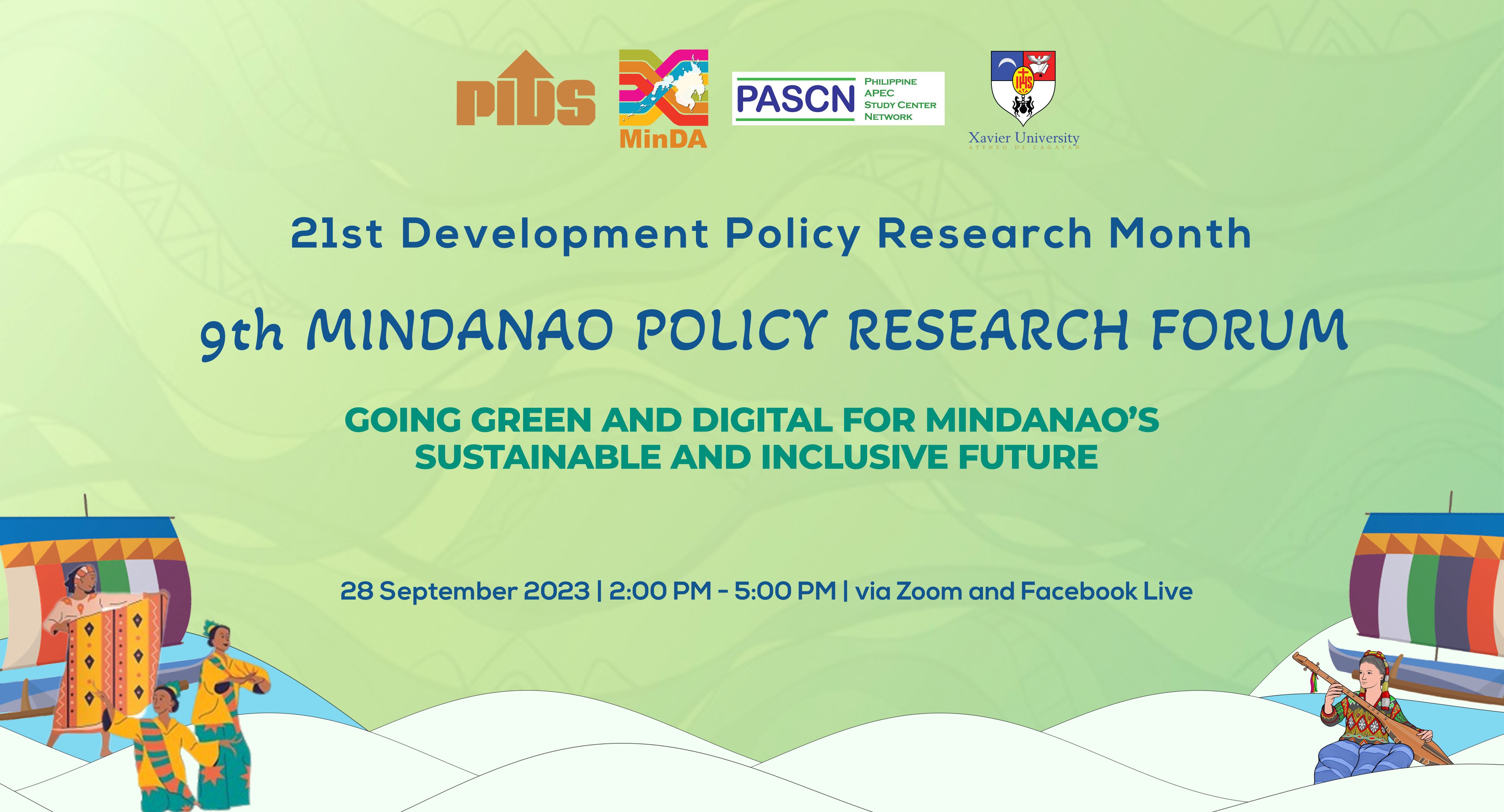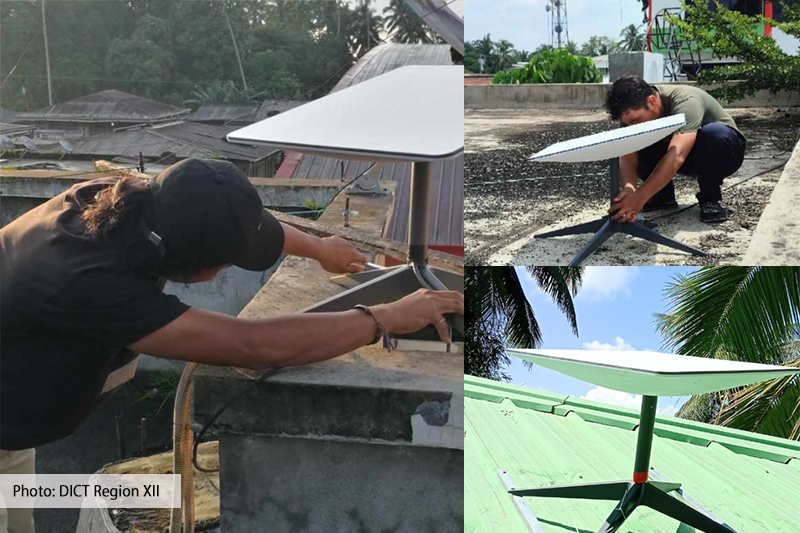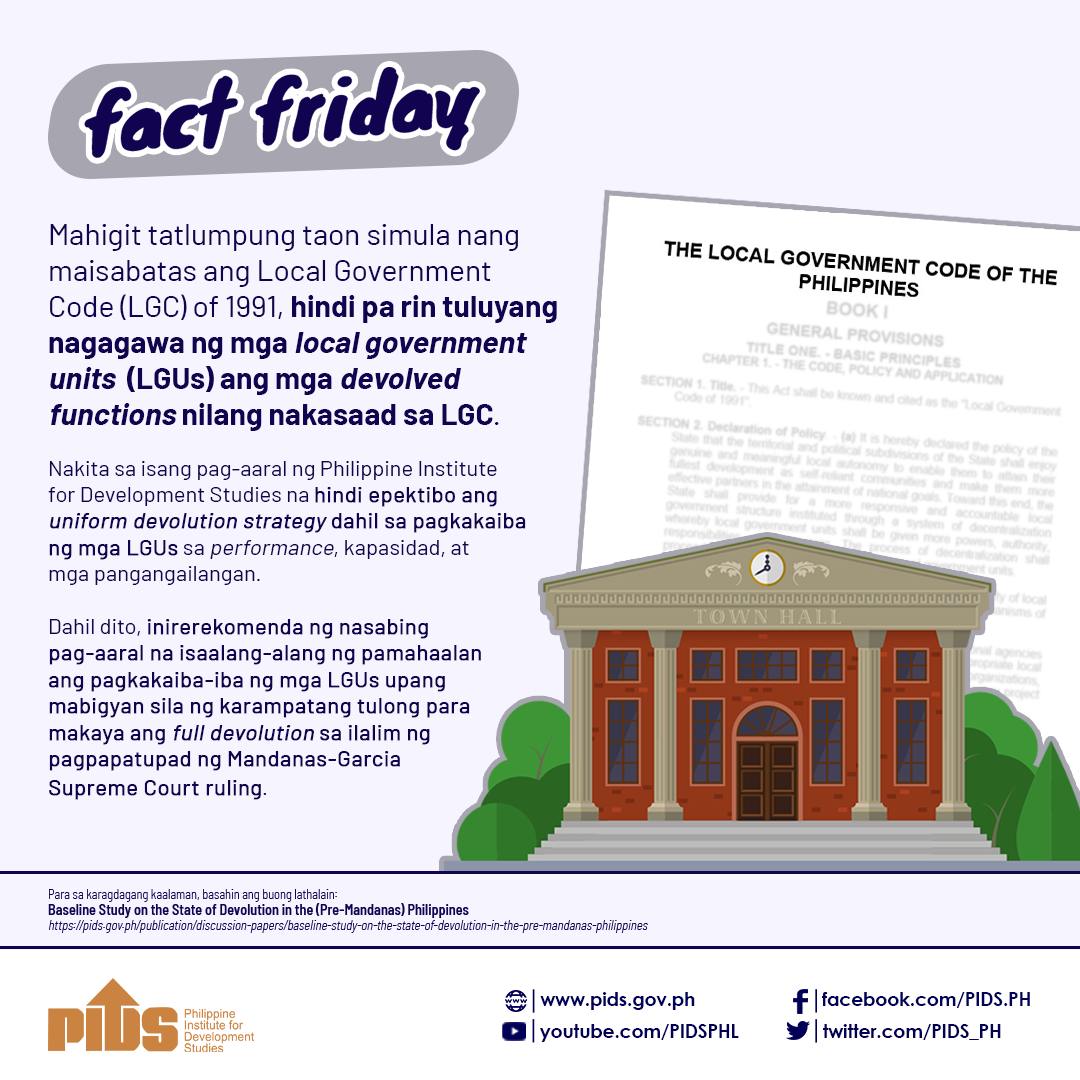THE road to perdition is paved with good intentions, as the saying goes, and could be applied to the bottom-up budgeting (BuB) tack of the government of former President Benigno S. Aquino III.
According to Budget Secretary Benjamin E. Diokno, the BuB program is not anymore necessary since the budget for local government units (LGUs) are already being provided through the internal-revenue allotment (IRA). Diokno said the LGUs should work around the IRA for its projects instead of being given more funds.
Developed jointly by the Human Development and Poverty Reduction (HDPR) and the Good Governance and Anti-Corruption (GGAC) Cabinet clusters, the BuB was first introduced in the Joint Memorandum Circular 1 on March 8, 2012, according to a World Bank document.
The BuB tack aimed to take into account inputs from government units from local government units (LGUs), barangays, municipalities and civil-society organization (CSO) when crafting the oveall budget for the fiscal year.
According to Budget Secretary Benjamin E. Diokno, the BuB program is not anymore necessary since the budget for LGUs are already being provided through the internal-revenue allotment (IRA). Diokno said the LGUs should work around the IRA for its projects instead of being given more funds.
In recent reports, Diokno stated that the 2017 national government budget, proposed by the current administration, will not include an allocation for BuB projects explaining that the funds, instead, could be spent for more effective projects. He further pointed out that the BuB program was only used as a “political tool” by the previous administration.
Allocations
IN the proposed 2017 national government budget submitted by the Department of Budget and Management (DBM) to Congress, allocations to Local Government Units (ALGUs) totaled P554.9 billion, which covers the budget for IRA and special shares of LGUs to national taxes.
Former Budget Secretary Florencio B. Abad stated in previous reports that, under the 2017 perceived national budget targeted by the Aquino administration, the Department of Budget and Management set aside 42 percent of the P35-billion government funds for BuB projects over the P24.7 billion designated for this year.
This year the ALGUs reached P485.82 billion, lower than that of the proposed budget for next year.
The LGU budget gained an increase of 14.2 percent over the 2016 level, mainly due to the 81.5-percent increase of the Local Government Support Fund (LGSF), which covers financial assistance to LGUs and municipalities, among others.
Based on DBM data, the 2016 budget of P3 trillion gave a share of P18.4 billion to fund the LGSF, this was noted to be the sectors biggest allocation to date.
According to Local Budget Circular 107 issued by the DBM in August last year, a budget of P2.83 billion was allotted for BuB projects to be implemented by the LGUs from the total earmarked funds for LGSF amounting to P3.13 billion.
Under the General Appropriations Act (GAA) for 2012, the LGSF was only given a budget of P200 million.
PIDS
IN a paper titled “Assessment of the Bottom-up Budgeting Process for FY 2015,” Rosario G. Manasan of the Philippine Institute for Development Studies (PIDS) explained that the BuB program is valued by LGU officials. This was so because of the additional funds it provides to the municipalities and cities for projects to further help the livelihood of the people.
“As such, the BuB creates fiscal space on the part of the LGU allowing it to finance and implement more projects than can be accommodated from its own resources,” Manasan said. “But beyond, and perhaps, more important, the BuB process increases participation in local governance.”
Aside from the increase in funds to further develop projects at the grassroots level, the BuB program was also deemed to be successful in soliciting active participation from local government officials. It was also explained that a number of CSOs were already involved in local planning through its membership in Local Development Councils (LDCs).
“However, CSOs are usually outnumbered in the LDC because they only account for 25 percent of the LDC and their role in the LDC is limited to approving, and, in many cases, ‘rubber stamping’ the LGUs Comprehensive Development Plan and the Annual Investment Program that have been prepared oftentimes by LGU officials with little involvement from CSOs,” the study said.
While the study of the conduct of BuB in 12 municipalities is focused more on the participatory aspect of the process, it was noted to also assess how well the BUB has contributed to the achievement of its poverty reduction and alleviation objective.
Status
ACCORDING to data from the BuB web site openbub.gov.ph and from previous reports, projects under the BuB program that have been completed from the year 2013 to 2015 totaled 16,576.
This was noted to be only 27.77 percent from the total number of BuB projects planned under the Aquino administration, which reached a total of 59,684 for three years, with funding reaching as much as P60 billion.
For the year 2015 1,730 projects were completed under the BuB program, 9,455 projects in 2014 and 5,391 in 2013. For the three-year period, the amount spent by the Philippine government for the completed BuB projects totaled P15.5 billion.
While 7,928 out of the total planned BuB projects over the three-year period were noted to be abandoned by the government. This was noted to be a 13-percent drop in the total BuB projects, and had cost the government P8.5 billion.
From the dropped 7,928 BuB projects, 289 projects were abandoned in 2015; 4,321 in 2014; and 3,318 projects were dropped for 2013. The reason for the dropped BuB projects was noted to be either because it was canceled, unfunded or replaced; nonfeasibility of the proposed project was a major factor of the abandoned projects.
Meanwhile, according to a statement from the Department of the Interior and Local Government (DILG) web site in April this year, from 2013 to 2015 a total of P51.70 billion has been provided by the national government to LGUs for the implementation of a total of 41,156 funded projects.
Takes time
DILG Undersecretary for Local Government Austere A. Panadero said the “BuB as a reform program has its own birth pains since its conceptualization in 2011 and early stages in 2013 and 2014.”
“Understandably and consequently, the completion rate takes time in improving through the years, as projects differ in nature ranging from infrastructure to livelihood,” Panadero added.
He cited that 8,385 BuB projects are still ongoing, 11,473 are on the pipeline and 4,722 have been proposed. The completion rate is 40 percent and the delivery rate is 61 percent.
“The national government agencies [NGAs] had the sole discretion in identifying what kind of projects are needed on the ground,” Panadero said. “With BuB, NGAs are now attuned with LGUs.”
He further pointed out that BuB projects for this year are covered in the 2016 GAA, with a P24.7-billion budget set aside to fund 14,324 projects. Allocated budget for BuB programs started with P8.9 billion in 2013.
Under the DILG, the department managed projects in line with improving potable-water supply, local access roads, and disaster-risk reduction management-related projects, such as evacuation centers, flood controls, equipment and rescue vehicles.
As of March 2016, the DILG completed 2,030 projects when the program started in 2013. This was noted to amount to a total of P9.201 billion.
In 2015 308 BuB projects were completed and 648 projects were noted to be ongoing with bulk of the projects still in the pipeline. A total of 749 projects were on procurement, 497 with approved initial documents and 261 under preparation of initial documents. The DILG downloaded P5.659 billion funds to LGUs for the implementation of potable-water projects and infrastructure-related projects.
Slow pace
THE PIDS study cited that sub-projects under the BuB program for the year 2013 developed at a slow pace. Only one approved BuB subproject in the 12 study sites had been completed, which was in March 2014.
“The implementation of BuB subprojects for FY 2013 is also found to have been hampered by the poor national government agency feedback at various stages of the process,” the Pids study said. “At the same time, poor coordination in project implementation between the NGAs and LGUs, on the one hand, and CSOs, on the other, has not only hampered the effective implementation of the subprojects but has also inhibited rather the facilitated NGA-LGU-CSO engagement.”
The study further recommended that, in order to achieve a harmonious BuB process, the government must encourage LGUs to conduct CSO mapping. This was noted to help properly identify accredited and nonaccredited CSOs within an LGU.
“This is in line with the promotion of federation of CSOs belonging to the same basic sector, meaning to minimize the number of member-CSOs within an LGU to manageable levels,” according to the Pids study.
Steps also include the encouragement of CSO leaders to consult with members of their organization and, at the same time, enhancing the capacity of CSOs to improve the quality of their participation in the BuB process.
The PIDS study further indicated that increased investment in social preparation by the government will help improve the quality of grassroots participation in the BuB process. Clarifying roles of the appointed local facilitator from the DILG and distinguishing the National Anti-Poverty Commission (NAPC)-affiliated BuB focal person was also seen to improve the BuB program implementation.
Decentralization
FOR European Chamber of Commerce of the Philippines (ECCP) Vice President Henry J. Schumacher, the BuB program should be retained and not scrapped altogether. This is especially true if the Duterte administration is veering toward a government that is “regionalized,” he said.
“The Duterte administration wants decentralization and regionalization. Given that vision, bottom-up budgeting makes sense,” Schumacher told the BusinessMirror through electronic mail. “Maybe that’s the aim for the 2018 budget.”
In earlier talks, it was pointed out that President Duterte is planning to shift the country’s form of government to a federal one, since he wants to bring growth and development to every part of the country and not just the metropolis.
The planned decentralization of power in the country’s government will need constitutional revisions, since the 1987 Philippine Constitution dictates that the Philippines is a democratic and republican state. Revision of the Constitution could either be conducted through a constitutional convention, Constitutional assembly, or through a people’s initiative, with the result being called a Charter change.
“Article II Section 1: The Philippines is a democratic and republican state. Sovereignty resides in the people and all government authority emanates from them,” the Constitution read.
Schumacher added that the ECCP has always been in favor of the BuB program since it stimulates participation in the grassroots level.
Abad’s view
FORMER Budget Secretary Florencio B. Abad stated in previous reports that, under the 2017 perceived national budget targeted by the Aquino administration, the DBM set aside 42 percent of the P35-billion government funds for BuB projects over the P24.7 billion designated for this year.
The increased allocation stemmed from the DBM’s push to expand BuB projects to cover barangays, which is at an estimated 12,000, that will receive BuB funds in 2017. From the P35-billion BuB project budget set by the DBM under Abad, P19.7 billion was programmed to go to beneficiary-municipalities that have complied with good governance standards.
According to earlier reports, the Aquino administration implemented the use of the BuB program under its term, in a bid to strengthen its commitment to create a national budget that is transparent, accountable and responsive to the needs of the Filipino people.
The implementation of BuB was meant to scale up the involvement and responsibility of LGUs in antipoverty and basic public-projects programs in their respective localities.
Stages
THE BuB projects under the DILG and other agencies are identified by representatives of LGUs and CSOs at the Local Poverty Reduction Action Team (LPRAT) level. These projects are then submitted to the Regional Poverty Reduction Action Team and then to the National Poverty Reduction Action Team. The list of projects is then endorsed to the DBM for inclusion in the National Expenditure Plan.
Approved BuB projects are then included in the GAA. Concerned LGUs have to prepare initial documents, including feasibility studies, program of works (POWs) and cost estimates. Once submitted, a memorandum of agreement between the DILG and the LGU has to be signed prior to the release of funds. The said stage was noted to take at least one to three months to complete.
Its procurement process takes an average of two to three months. While the actual project implementation for water projects takes 18 months to complete for each project. For infrastructure projects, it takes six months to two years to be completed.
Panadero said the DILG houses the BuB Project Management Offic, which is responsible for the overall coordination of the BuB program with the guidance of the BuB Executive Committee. He explained that 14 other government agencies distribute funds to the LGUs, with the said agencies reporting their project status to the Open BuB Portal, and the department consolidates the overall BuB status. All BuB participating agencies should be bounded by GAA and exercise due diligence in the implementation.
According to Budget Secretary Benjamin E. Diokno, the BuB program is not anymore necessary since the budget for local government units (LGUs) are already being provided through the internal-revenue allotment (IRA). Diokno said the LGUs should work around the IRA for its projects instead of being given more funds.
Developed jointly by the Human Development and Poverty Reduction (HDPR) and the Good Governance and Anti-Corruption (GGAC) Cabinet clusters, the BuB was first introduced in the Joint Memorandum Circular 1 on March 8, 2012, according to a World Bank document.
The BuB tack aimed to take into account inputs from government units from local government units (LGUs), barangays, municipalities and civil-society organization (CSO) when crafting the oveall budget for the fiscal year.
According to Budget Secretary Benjamin E. Diokno, the BuB program is not anymore necessary since the budget for LGUs are already being provided through the internal-revenue allotment (IRA). Diokno said the LGUs should work around the IRA for its projects instead of being given more funds.
In recent reports, Diokno stated that the 2017 national government budget, proposed by the current administration, will not include an allocation for BuB projects explaining that the funds, instead, could be spent for more effective projects. He further pointed out that the BuB program was only used as a “political tool” by the previous administration.
Allocations
IN the proposed 2017 national government budget submitted by the Department of Budget and Management (DBM) to Congress, allocations to Local Government Units (ALGUs) totaled P554.9 billion, which covers the budget for IRA and special shares of LGUs to national taxes.
Former Budget Secretary Florencio B. Abad stated in previous reports that, under the 2017 perceived national budget targeted by the Aquino administration, the Department of Budget and Management set aside 42 percent of the P35-billion government funds for BuB projects over the P24.7 billion designated for this year.
This year the ALGUs reached P485.82 billion, lower than that of the proposed budget for next year.
The LGU budget gained an increase of 14.2 percent over the 2016 level, mainly due to the 81.5-percent increase of the Local Government Support Fund (LGSF), which covers financial assistance to LGUs and municipalities, among others.
Based on DBM data, the 2016 budget of P3 trillion gave a share of P18.4 billion to fund the LGSF, this was noted to be the sectors biggest allocation to date.
According to Local Budget Circular 107 issued by the DBM in August last year, a budget of P2.83 billion was allotted for BuB projects to be implemented by the LGUs from the total earmarked funds for LGSF amounting to P3.13 billion.
Under the General Appropriations Act (GAA) for 2012, the LGSF was only given a budget of P200 million.
PIDS
IN a paper titled “Assessment of the Bottom-up Budgeting Process for FY 2015,” Rosario G. Manasan of the Philippine Institute for Development Studies (PIDS) explained that the BuB program is valued by LGU officials. This was so because of the additional funds it provides to the municipalities and cities for projects to further help the livelihood of the people.
“As such, the BuB creates fiscal space on the part of the LGU allowing it to finance and implement more projects than can be accommodated from its own resources,” Manasan said. “But beyond, and perhaps, more important, the BuB process increases participation in local governance.”
Aside from the increase in funds to further develop projects at the grassroots level, the BuB program was also deemed to be successful in soliciting active participation from local government officials. It was also explained that a number of CSOs were already involved in local planning through its membership in Local Development Councils (LDCs).
“However, CSOs are usually outnumbered in the LDC because they only account for 25 percent of the LDC and their role in the LDC is limited to approving, and, in many cases, ‘rubber stamping’ the LGUs Comprehensive Development Plan and the Annual Investment Program that have been prepared oftentimes by LGU officials with little involvement from CSOs,” the study said.
While the study of the conduct of BuB in 12 municipalities is focused more on the participatory aspect of the process, it was noted to also assess how well the BUB has contributed to the achievement of its poverty reduction and alleviation objective.
Status
ACCORDING to data from the BuB web site openbub.gov.ph and from previous reports, projects under the BuB program that have been completed from the year 2013 to 2015 totaled 16,576.
This was noted to be only 27.77 percent from the total number of BuB projects planned under the Aquino administration, which reached a total of 59,684 for three years, with funding reaching as much as P60 billion.
For the year 2015 1,730 projects were completed under the BuB program, 9,455 projects in 2014 and 5,391 in 2013. For the three-year period, the amount spent by the Philippine government for the completed BuB projects totaled P15.5 billion.
While 7,928 out of the total planned BuB projects over the three-year period were noted to be abandoned by the government. This was noted to be a 13-percent drop in the total BuB projects, and had cost the government P8.5 billion.
From the dropped 7,928 BuB projects, 289 projects were abandoned in 2015; 4,321 in 2014; and 3,318 projects were dropped for 2013. The reason for the dropped BuB projects was noted to be either because it was canceled, unfunded or replaced; nonfeasibility of the proposed project was a major factor of the abandoned projects.
Meanwhile, according to a statement from the Department of the Interior and Local Government (DILG) web site in April this year, from 2013 to 2015 a total of P51.70 billion has been provided by the national government to LGUs for the implementation of a total of 41,156 funded projects.
Takes time
DILG Undersecretary for Local Government Austere A. Panadero said the “BuB as a reform program has its own birth pains since its conceptualization in 2011 and early stages in 2013 and 2014.”
“Understandably and consequently, the completion rate takes time in improving through the years, as projects differ in nature ranging from infrastructure to livelihood,” Panadero added.
He cited that 8,385 BuB projects are still ongoing, 11,473 are on the pipeline and 4,722 have been proposed. The completion rate is 40 percent and the delivery rate is 61 percent.
“The national government agencies [NGAs] had the sole discretion in identifying what kind of projects are needed on the ground,” Panadero said. “With BuB, NGAs are now attuned with LGUs.”
He further pointed out that BuB projects for this year are covered in the 2016 GAA, with a P24.7-billion budget set aside to fund 14,324 projects. Allocated budget for BuB programs started with P8.9 billion in 2013.
Under the DILG, the department managed projects in line with improving potable-water supply, local access roads, and disaster-risk reduction management-related projects, such as evacuation centers, flood controls, equipment and rescue vehicles.
As of March 2016, the DILG completed 2,030 projects when the program started in 2013. This was noted to amount to a total of P9.201 billion.
In 2015 308 BuB projects were completed and 648 projects were noted to be ongoing with bulk of the projects still in the pipeline. A total of 749 projects were on procurement, 497 with approved initial documents and 261 under preparation of initial documents. The DILG downloaded P5.659 billion funds to LGUs for the implementation of potable-water projects and infrastructure-related projects.
Slow pace
THE PIDS study cited that sub-projects under the BuB program for the year 2013 developed at a slow pace. Only one approved BuB subproject in the 12 study sites had been completed, which was in March 2014.
“The implementation of BuB subprojects for FY 2013 is also found to have been hampered by the poor national government agency feedback at various stages of the process,” the Pids study said. “At the same time, poor coordination in project implementation between the NGAs and LGUs, on the one hand, and CSOs, on the other, has not only hampered the effective implementation of the subprojects but has also inhibited rather the facilitated NGA-LGU-CSO engagement.”
The study further recommended that, in order to achieve a harmonious BuB process, the government must encourage LGUs to conduct CSO mapping. This was noted to help properly identify accredited and nonaccredited CSOs within an LGU.
“This is in line with the promotion of federation of CSOs belonging to the same basic sector, meaning to minimize the number of member-CSOs within an LGU to manageable levels,” according to the Pids study.
Steps also include the encouragement of CSO leaders to consult with members of their organization and, at the same time, enhancing the capacity of CSOs to improve the quality of their participation in the BuB process.
The PIDS study further indicated that increased investment in social preparation by the government will help improve the quality of grassroots participation in the BuB process. Clarifying roles of the appointed local facilitator from the DILG and distinguishing the National Anti-Poverty Commission (NAPC)-affiliated BuB focal person was also seen to improve the BuB program implementation.
Decentralization
FOR European Chamber of Commerce of the Philippines (ECCP) Vice President Henry J. Schumacher, the BuB program should be retained and not scrapped altogether. This is especially true if the Duterte administration is veering toward a government that is “regionalized,” he said.
“The Duterte administration wants decentralization and regionalization. Given that vision, bottom-up budgeting makes sense,” Schumacher told the BusinessMirror through electronic mail. “Maybe that’s the aim for the 2018 budget.”
In earlier talks, it was pointed out that President Duterte is planning to shift the country’s form of government to a federal one, since he wants to bring growth and development to every part of the country and not just the metropolis.
The planned decentralization of power in the country’s government will need constitutional revisions, since the 1987 Philippine Constitution dictates that the Philippines is a democratic and republican state. Revision of the Constitution could either be conducted through a constitutional convention, Constitutional assembly, or through a people’s initiative, with the result being called a Charter change.
“Article II Section 1: The Philippines is a democratic and republican state. Sovereignty resides in the people and all government authority emanates from them,” the Constitution read.
Schumacher added that the ECCP has always been in favor of the BuB program since it stimulates participation in the grassroots level.
Abad’s view
FORMER Budget Secretary Florencio B. Abad stated in previous reports that, under the 2017 perceived national budget targeted by the Aquino administration, the DBM set aside 42 percent of the P35-billion government funds for BuB projects over the P24.7 billion designated for this year.
The increased allocation stemmed from the DBM’s push to expand BuB projects to cover barangays, which is at an estimated 12,000, that will receive BuB funds in 2017. From the P35-billion BuB project budget set by the DBM under Abad, P19.7 billion was programmed to go to beneficiary-municipalities that have complied with good governance standards.
According to earlier reports, the Aquino administration implemented the use of the BuB program under its term, in a bid to strengthen its commitment to create a national budget that is transparent, accountable and responsive to the needs of the Filipino people.
The implementation of BuB was meant to scale up the involvement and responsibility of LGUs in antipoverty and basic public-projects programs in their respective localities.
Stages
THE BuB projects under the DILG and other agencies are identified by representatives of LGUs and CSOs at the Local Poverty Reduction Action Team (LPRAT) level. These projects are then submitted to the Regional Poverty Reduction Action Team and then to the National Poverty Reduction Action Team. The list of projects is then endorsed to the DBM for inclusion in the National Expenditure Plan.
Approved BuB projects are then included in the GAA. Concerned LGUs have to prepare initial documents, including feasibility studies, program of works (POWs) and cost estimates. Once submitted, a memorandum of agreement between the DILG and the LGU has to be signed prior to the release of funds. The said stage was noted to take at least one to three months to complete.
Its procurement process takes an average of two to three months. While the actual project implementation for water projects takes 18 months to complete for each project. For infrastructure projects, it takes six months to two years to be completed.
Panadero said the DILG houses the BuB Project Management Offic, which is responsible for the overall coordination of the BuB program with the guidance of the BuB Executive Committee. He explained that 14 other government agencies distribute funds to the LGUs, with the said agencies reporting their project status to the Open BuB Portal, and the department consolidates the overall BuB status. All BuB participating agencies should be bounded by GAA and exercise due diligence in the implementation.

